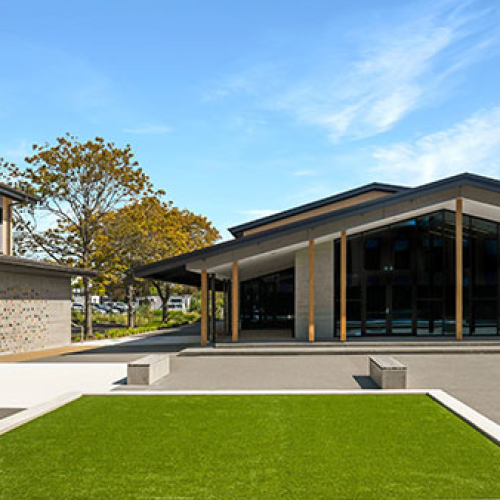
LCŌ's Integrated Learning Programme Features in NZASE Article
The NZASE (New Zealand Association of Science Educators) recently interviewed teachers taking part in our Y9 and Y10 Integrated Studies. The following is an excerpt from Mike Stone's article.
Whiria te tāngata - Weave the people together Whakatauki for Linwood’s integrated programme.
Helen Mora is the Science HoLA at Linwood College. She gathered a group of teachers together to talk with us about their school’s integrated program.
At Linwood, Year 9 and 10 students participate in integrated units, taught by pairs of teachers covering different areas of the curriculum - English, Maths, Science and Social Studies as well as PE, Māori and Technology.
Classes are organised into the school’s four houses, and each pair teaches the prepared unit to a class from a different house each term, fine-tuning as they go. Topics for 2020 are listed here.
These courses bring together different learning areas of the school in a way that enables students to develop a deep understanding of what can be complex ideas and skills. It also models the interdisciplinary way we experience the real world. This is the second year of Integrated Studies, starting with Year 9 in 2019, introducing Year 10 this year and planning for integrated courses in L1 in 2021.
Angela Johnson (Science) and Nick Colville (English) are teaching a genetics ethics unit this year. They use the Stan Walker video and The Gene Seekers booklet to set the context. They plan together and each specialist teaches to their strength, with the other teacher assisting in the classroom. This blends as the year progresses.

Lessons often start with a pertinent reading, which may be science-based or not. Progress during the unit is measured using ARB tasks for Do Nows or end-of-lesson checks. The summative assessment is still being planned.
Miriam Bulger (Technology) and Olivia Silvester (Maths) are teaching a unit making, adapting and testing catapults, and will use them to destroy a castle wall at the end of the unit. Students see a real application for their maths, the technology process and underpinning science concepts, although some still struggle with the calculations. She enjoys the delight when a student finds the factor that makes the difference between a 60cm shot and a 3m shot.
One of the positive outcomes of an integrated course was observed in a unit on Forensics (taught by Science and English) last year. In this unit students learn simple science skills - fingerprinting, chromatography and fibre examination. Their learning was brought together in the assessment when they had to present their evidence in a court case, using four suspects from the school community. Helen said, “By doing it with English we ended up with a result science could never have got by itself. The court session took three weeks, and gave the whole unit a different focus and made for rich learning. We loved it, and the kids loved it.”

There are many benefits for teachers. Nick Colville says, ”When we work with a teacher of another subject we learn about that subject. And it’s great to work with another adult, sharing ideas, helping each other, creating lesson plans. It’s fun and the students enjoy the banter between us.” Angela Johnson says, “I can google the answer to a student question while the other teacher is leading the lesson.” “Students find it hard at the start,” says Miriam, “getting used to this new way of doing things. But by the end of the year this integrated class is my favourite – the students are more mature and ‘integration-trained’. Students can’t tell the difference between the learning areas. But they do see the purpose of maths better.”
This group of Linwood College teachers suggests that those trying integration “need someone you can work with, time, and an ability to brainstorm ideas”.
